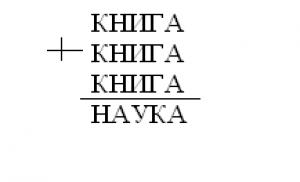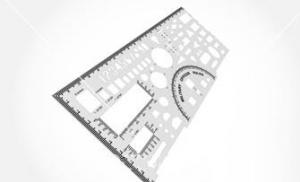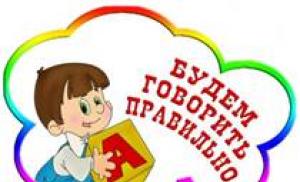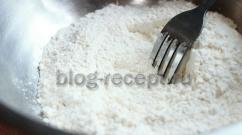Caesarean section - consequences. Children born by caesarean section, after caesarean section
Many expectant mothers believe that caesarean section is the ideal way of delivery: there are no grueling contractions, the risk of birth trauma for the baby and mother is minimized, everything goes quickly and easily. Alas, this is far from the case. The consequences of abdominal surgery for the female body are well known: the risk of bleeding and the formation of adhesions, infectious diseases and difficulties with subsequent pregnancy and childbirth. Here we will look at how a caesarean section affects the baby and how children develop after caesarean section.
Is a caesarean section dangerous for a baby?
Disputes about what is preferable for the child - natural childbirth or caesarean section - do not subside. Supporters of operative delivery give numerous examples of serious injuries to the baby during natural childbirth.
However, it cannot be argued that there are no injuries to the child during caesarean section. It happens that children born by caesarean section, receive injuries to the spine, brain and spinal cord, fractures and dislocations, cuts and even amputation of the fingers. True, such cases are extremely rare and depend on the qualifications of the doctor. In addition, in case of injuries to the baby, the necessary treatment or surgical intervention is immediately carried out. Therefore, if you should choose a maternity hospital in advance, whose doctors have extensive experience in operative childbirth and are ready for any situation.
The effect of caesarean section on the child
In the process of natural childbirth, the baby is born, moving along the birth canal of the mother. The lungs of the child at this stage are compressed, amniotic fluid is removed from them, so after birth the baby can breathe in deeply. Babies born by caesarean section do not go through this stage, so their lungs are full of amniotic fluid. Of course, after birth, the fluid will be removed, but a newborn baby after cesarean is much more susceptible to respiratory diseases than his peer who came into the world in a natural way. It is especially difficult for premature babies after caesarean section: their respiratory system not fully formed.
If mom was held emergency operation, then, most likely, general anesthesia was used, which means that the baby also got anesthetic substances. Such children after caesarean section are lethargic, suck poorly, and may experience nausea. In addition, a sharp pressure drop between the mother's womb and outside world can lead to microbleeding.
One of the consequences of a caesarean section for a child is poor adaptation. The fact is that in the process of natural childbirth, the baby receives positive stress, a whole bunch of hormones are produced in his body that help the baby adapt to the world around him in the first hours of life. The “Caesarian baby” does not experience such stress, it is more difficult for him to adapt to new conditions. True, if the operation is performed on a mother who is already giving birth, then such a problem may not arise.
In addition, the features of children after caesarean section are hyperactivity and attention deficit disorder, low hemoglobin.
Caring for a baby after a caesarean section
Many mothers, having read about the consequences of a caesarean section for a child, were probably horrified. However, not everything is so scary: "caesareats" are usually fine  cope with all the difficulties, and the development of a child after a cesarean after six months is no different from the development of peers who were born naturally. An exception can only be babies who have experienced acute hypoxia or.
cope with all the difficulties, and the development of a child after a cesarean after six months is no different from the development of peers who were born naturally. An exception can only be babies who have experienced acute hypoxia or.
Of course, such children need more attention and care. A newborn baby after a caesarean needs to be constantly next to his mother. Give your baby a massage, feed on demand, play with him.
Do not be afraid of operative delivery: very often, a caesarean section for a child and his mother is the only way to maintain health and even life.
Childbirth is a serious test, both for mother and for the baby. Often life makes significant adjustments to the planned future mother childbirth scenario, and the baby is born by caesarean section. And if until recently it was believed that a caesarean section was a safer way for a child to give birth in comparison with natural childbirth, today there are more and more facts indicating the opposite. We will talk about how to help the baby as easily as possible to transfer the tests that have fallen on him in this article.
baby after caesarean section
A child after a caesarean section The problem is that the period of adaptation of babies born by caesarean section is more difficult. This is mainly due to the fact that during the operation, the condition of the newborn is influenced to one degree or another by many factors. For example, when it comes to an urgent, unplanned caesarean section, in addition to anesthesia and the surgical intervention itself, the child’s condition is significantly affected by the unfavorable obstetric and / or mother’s diseases that caused the operation, as well as the conditions of intrauterine existence prior to operative delivery.
But even if the operation was carried out in a planned manner, the adaptation of a child removed by caesarean section is more intense than that of a child born naturally. This is due to the lack of impact on the fetus of the physiologically necessary biomechanism of childbirth and the stress response of the fetus to childbirth.
As shown by numerous studies, newborns born by caesarean section, in comparison with newborns born through the natural birth canal, are characterized by a higher frequency of delaying the first breath, swallowing amniotic fluid and drug depression. Newborns delivered by caesarean section have a lower Apgar score and are therefore more likely to require primary resuscitation. Therefore, attention to cesareans by medical personnel is much greater than to babies born in the "traditional" way.
Until recently, in almost all our maternity hospitals, there was a practice of taking babies after a caesarean section to the children's department to monitor their condition. The child could be separated from the mother for a day or more. At the same time, he was fed with a mixture, and his mother was brought to see 1, at best 2 times a day. At the same time, the mother was in the intensive care unit, since her condition after the operation also requires careful monitoring. Is such a gross interference in the life and health of this couple justified? Is there a compromise between the need for careful monitoring of the course of the postoperative period and the preservation of the unity of mother and child?
To date, there is strong evidence that the separation of mother and child after childbirth has irreversible Negative consequences, both physical and mental health both. The well-known French obstetrician-gynecologist Michel Auden wrote about this very convincingly, based on data from evidence-based medicine, in his book “Caesarean section: Safe exit or a threat to the future? The main conclusion of this book: For a child, a caesarean section is not best way birth into the world, but interference in the natural process, which should be used only for health reasons. And this means that the conditions in which the child finds himself immediately after the operation should meet the needs of the newborn child as much as possible.
What are these needs of a newborn?
- Love
- Warmly
- Breast milk
- Purity
How to meet the needs of the baby after a caesarean section
What needs to be done in the case of a cesarean section to ensure that these needs of the baby are met? Actually not so much. If the operation is performed using epidural anesthesia, then skin-to-skin contact between mother and child can be initiated already in the operating room. In addition, the presence of the father during childbirth should be encouraged. In many maternity hospitals in our country, partner deliveries have already become a common practice. The presence of the father during the caesarean section is no exception. Immediately after the child is taken out, it is laid out in skin-to-skin contact with the father, who is already ready to meet the baby in the operating room next to it. Thus, skin-to-skin contact during the first 2 hours after the operation is carried out between the child and the father.
It's hard to describe in words emotional condition, which accompanies young dads during this first meeting with the baby. Many of them cry, from an excess of feelings! But these mean men's tears- these are tears of happiness and joy from the realization that they can do something for their children. In this situation, the father actually becomes indispensable for his cub! It is generally accepted that fathers, when they are entrusted with children, do not so much nurse them as guard them. They, as it were, on the sidelines, help the mother while she is busy with the child. But it is not so. A study of fathers' behavior shows that when they are given the opportunity to actively participate in the care of newborns, they become just as caring nannies as mothers. They may be a little less quick than mothers, but they are capable of deep affection for babies. Therefore, the help and support of the father will be more important than ever for the mother in the first few days after the operation.
From the maternity hospital, only one thing is required - to create conditions for the joint stay of the mother and child immediately after a cesarean section and to ensure free visits to fathers.
The separation of mother and child in the first few days after surgery (usually 2-3 days), as we have already said, can have disastrous consequences for the mother's health, lactation and the health of the child. The mother does not have the opportunity to put the baby to the breast as often as he needs, which leads to a shortage of milk. A child separated from his mother is supplemented with a mixture, with all the ensuing consequences. In addition, he is occasionally worn to his mother for “dates”. By the way, they are usually worn on their hands along cold corridors, exposing it to an additional risk of hypothermia. The lack of physical contact with the mother leads to a violation of the colonization of the child with microflora and increases the risk of infectious diseases. This list of undesirable effects can be very long.
Unfortunately, in our country this provision (joint stay after caesarean section from the very first hours and free visits to fathers) does not find quick understanding among the heads of maternity hospitals and medical personnel. Although the logic and simplicity of this approach is obvious. And in those maternity wards where the joint stay of the mother and child after a cesarean section from the very first hours after the operation is already organized and the father is involved in the care, now they don’t even imagine how it was possible to work differently before.
But what is the main deterrent? The idea that after the operation, due to her condition, a woman cannot take care of a child, she needs intensive care and she needs peace.
However, today, in most cases after caesarean section:
- after 1.5-2 hours, the puerperal woman will be allowed to turn in bed, regardless of the type of anesthesia.
- after 6 hours, the puerperal is allowed to sit on the bed, get up and walk around the ward.
- infusion therapy is limited to 800-1200 ml.
- on the first day after the operation, the puerperal becomes fully mobile, capable of self-service and caring for the newborn
- transfer to the postpartum ward is possible after 10-12 hours.
- The 24-hour coexistence of mother and child is very important in terms of the development of lactation. The fact is that there is an obvious connection between the physiology of childbirth and the physiology of breastfeeding, and this is confirmed by many examples. Therefore, the mechanism of “starting” lactation in women after caesarean section cannot be the same as after physiological birth. In most cases, after a vaginal birth, it is important to intrude as little as possible into the process of starting feeding: it is much more important to give the mother to be alone with the baby in an atmosphere of complete peace and solitude. After a caesarean section, mother and child, for obvious reasons, need help and it is not possible to retire. Therefore, failures in lactation occur much more often.
Breastfeeding after caesarean section
There is evidence to suggest that caesarean section without labor increases the likelihood of breastfeeding difficulties. The explanation for this is quite simple: when the time of birth is scheduled by the doctor, neither mother nor child is given the opportunity to secrete hormones that are responsible for both childbirth and lactation. One study addressing this issue assessed the relationship between the time of initiation of breastfeeding and the amount of daily milk output in women after a repeated caesarean section. It was found that, compared with women operated during labor, those who delivered by elective caesarean had both a delay in the onset of lactation and a lower volume of milk produced.
Speaking about the first attachment of a baby to the breast, today, when epidural and spinal anesthesia is widespread, many women can breastfeed their baby directly on the breast. operating table. If the operation was performed under short-term and shallow general anesthesia, then many children can be attached to the breast immediately after the mother leaves the anesthesia.
The absence of physical contact and attachment of the child to the breast in the near future after the operation leads to a decrease in the activity of breast sucking, the child's passivity and frequent refusal of the breast. Therefore, in the first days after surgery, most women need help. A woman needs an assistant to bring the baby, adjust the pillows, properly attach the baby to the breast, get comfortable, turn around to give another breast. And she has the right to count on this help.
Unfortunately, today one cannot expect a quick and widespread introduction of the above practices without changing the mentality of medical personnel. It takes time. At the same time, the awareness of future parents that such practices are possible, and they will meet the needs of both mother and baby as much as possible, plays a very important role. important role in their practical implementation. So, as they say, everything is in your hands!
AT recent times many young mothers deliberately go to give birth by caesarean section. It seems to them that they are less painful, faster. But few people think about how the operation will affect the newborn.
I have two daughters. The first birth was natural, the second - caesarean. Unfortunately, the daughter sat on the pope the entire pregnancy. I wrote more about childbirth, we talked and. Now I want to tell you what difficulties I had to face after the second birth.
Child and anesthesia
A caesarean section is an abdominal operation, which means that the mother is given anesthesia, which also affects the child. They say that epidural anesthesia is safer, by the way, I chose it. And yet, it is anesthesia.
It is believed that the use of muscle relaxants and analgesics during anesthesia entails changes in the vital processes of newborns, respiratory depression and the central nervous system. That is why the children after caesarean first time is very sluggish. It's hard to say if this is true, but my daughter was constantly crying.
Physiological features of children after caesarean section
Naturally, the pathology of the mother, which led to the decision to conduct such childbirth, can lead to pathology in the baby. It happened to me. Due to the wrong position in the womb, she showed torticollis.
For the first month, my daughter slept on an orthopedic pillow, wore a splint, she was given a massage, fortunately, everything went quickly.
It is believed that such children are more likely to suffer from hyperactivity syndrome.. Everything can be, but both of my daughters were diagnosed with this. It has now been removed from my youngest daughter. But in this regard, there are problems with the eldest daughter, although there were natural births.
A sharp pressure drop between the mother's womb and the environment can lead to microbleeding in the brain. Yes, I noticed that children born as a result of cesarean are more likely to have intracranial pressure.
Unfortunately, my daughter did too. But timely treatment helped. Previously, she often had a headache, she wrapped her arms around it, cried. This rarely happens now.
It is also believed that these children usually do not gain weight well. I know at least five children after caesarean section. And no one had problems gaining weight, neither did we. Although the younger daughter gained weight worse than the eldest, but in principle, within the normal range.
Their immune system is much weaker, they get sick more often. I fully agree with this. I don't know why this is happening, but that's the way it is. All familiar children get sick much more often. And I noticed that under the same conditions, the youngest daughter is more prone to various diseases.
Caesareans are more likely to have allergic reactions to food. And this, too, oddly enough, coincides. At six months, I could not start complementary foods in any way, all products were rejected immediately. Now my daughter is 1.5 and there are practically no allergic reactions.
Psychological characteristics of children after caesarean section
So far, it is difficult to verify what doctors say about the psychology of children born by caesarean section. But some points are already noticeable.
It is believed that they suffer from attention deficit. My youngest daughter is more drawn to me or dad, she cannot be alone in the room.
Psychologists believe that these children acquire certain character traits: fear of change; distraction; irascibility and anxiety; lethargy; isolation; excessive touchiness; low self-esteem.
I would like to believe that with proper upbringing, such traits will not appear in my daughter.
They are either more aggressive than the rest, or overly passive. It's hard to say, but it seems to me that in this regard, my daughter is all right. Yes, she sometimes fights, but who does not fight at all? Yes, and I would be glad if she was sometimes more calm.
Such children find it difficult to come into contact with new people. This is the absolute truth, the daughter will not go to strangers in her arms, she is wary of those whom she has not seen for a long time or sees for the first time.
Colic
I really want to highlight this topic. When my eldest daughter was born, I had no idea what it was. But already in the first days after the birth of my second daughter, I realized that everything would not be so simple.
Every day in the evening she began to scream, bend her legs .... It was clear that it was colic. I was on a strict diet, it turned out to be a reaction to the antibiotics that all mothers inject after surgery. As a result, the intestinal microflora is disturbed in the child, colic, problems with stools occur.
It was very difficult to fight. They gave plantex, dill water. They massaged and put hot diapers on the stomach. And still, for about 30-40 minutes she screamed non-stop. It ended at about 4 months.
And I believe that most often colic occurs in children after a caesarean section. Many friends had this problem after the operation.
It is difficult to say exactly how this method of delivery will affect the development of the child. After all, the above complications can be in any naturalborn baby. Disputes on this topic will always be relevant. Moreover, each child is individual.
Passing through the birth canal is the most painful moment of natural childbirth, but the rehabilitation period after it, as a rule, passes without problems. With a cesarean section, removing the baby from the womb is painless, and problems begin from the moment the baby is born. Most women go to a caesarean section far beyond own will, after all, like any surgical operation, cesarean is fraught with consequences. But if the operation cannot be avoided, one must at least know what to prepare for. So, What are the consequences of a caesarean section for the mother and child?
Cesarean: planned and emergency
Is a caesarean section dangerous? The answer depends on whether it is planned or emergency. Planned is carried out according to indications a few days before the DA. An emergency can take place during childbirth in case something went wrong. Elective and emergency caesarean sections differ in indications and degree of risk to the mother and fetus.
A planned caesarean section is performed when the size of the baby's head is larger than the size of the pelvis, or if the woman has a pelvis irregular shape. Indications for a planned cesarean may include tumors of the pelvic organs, oblique and transverse position of the fetus, the presence of a scar on the uterus, the presence of diseases in which childbirth threatens the life of a pregnant woman, myopia of a pregnant woman, infectious diseases that can be transmitted to a child during natural childbirth (hepatitis B , C, HIV infection).
An emergency caesarean section is performed with preeclampsia and exlampsia, with weak labor activity, the threat of uterine rupture, fetal hypoxia, with bleeding due to placenta previa or premature abruption, as well as with prolapse of the umbilical cord.
The consequences of a caesarean section for a child
Psychologists are cunning when they say that "Caesarites" lack the perseverance and independence that children born naturally have. This opinion is subjective. The birth period lasts hours, and the process of education - years. By mental health"Caesarites" do not differ from brothers who have gone through the birth canal. In physiological terms, they are still deprived of certain advantages. For example, only when natural childbirth the skin and mucous membranes are contaminated with bacteria. Meanwhile, the microflora of the mother is the immune factor of the child. The main consequences of a caesarean section for a child affect the respiratory system. Mucus remains in the infant's respiratory tract after cesarean, which is squeezed out during vaginal delivery, this mucus can lead to the development of hyaline-membrane disease. In addition, the anesthesia that the mother receives depresses the respiratory center of the child.
Natural childbirth triggers the basic systems of life. This does not happen during operative delivery, therefore, among the consequences of a caesarean section for a child, infectious diseases, jaundice, respiratory pathologies, stress, and metabolic disorders are often noted.
Consequences for the mother
To understand whether a caesarean section is dangerous, imagine: every third caesarean section ends with surgical complications in women. One of the most common consequences of a caesarean section is anemia. Therefore, most women have to take iron supplements until their hemoglobin levels return to normal. Another common consequence of a caesarean section is infection of the uterus and neighboring organs, to prevent which a course of antibiotics is prescribed. Since caesarean sections are often performed under general anesthesia, abnormal body reactions to the pain medication are not ruled out.
In addition to the complications that occur on the operating table, a woman expects the consequences of a caesarean section in the postoperative period. For example, after cesarean, intestinal motility recovers more slowly than during natural childbirth. For several weeks after childbirth, pain persists in the suture area, as well as in the abdominal region. Set up breast-feeding, experiencing such pain, is quite difficult.
Adhesions after caesarean section represent a separate danger. These are fusions of connective tissue between intestinal loops and other internal organs. Adhesions after caesarean section may long time remain invisible, and can cause pain in the pelvic area and impaired peristalsis. One of the most severe consequences of adhesions is intestinal obstruction, which occurs when intestinal loops become immobile. Adhesions after caesarean section that affect the fallopian tubes, ovaries and uterus can cause secondary infertility or ectopic pregnancy. Treatment of adhesions at best comes down to a course of physiotherapy. In severe forms, a woman needs surgical treatment.
In addition, a number of psychological problems are possible. If a woman planned to give birth on her own, she may experience disappointment because she did not cope with childbirth.
Scar and scar after caesarean section
The scar after a caesarean section, which remains on the uterus, will have an impact on the rest of your life and, especially, on the reproductive system. If a woman plans to give birth again, she will have to use contraception for two years. A caesarean section scar can interfere with placental attachment and carries the risk of uterine rupture during natural childbirth. Therefore, the main consequence of a cesarean section is the next cesarean, only in rare cases, women give birth after such an operation on their own.
The scar after a caesarean section is perhaps the least of the troubles, although many women in labor are afraid of it the most. In modern medical practice, the incision is made carefully and subsequently the suture may not be visible, although due to individual features some patients develop a keloid scar.
 In the first 10-15 days, the scar after a caesarean section needs special treatment.- at this time, the woman experiences severe pain in the incision area and needs anesthesia. During the first week, doctors treat the seam with antiseptics. A few days later, superficial healing of the scar after a caesarean section occurs, and after another six months, a strong scar forms in the incision area. At first, the purple scar stands out brightly on the skin, but then it turns pale and becomes almost invisible.
In the first 10-15 days, the scar after a caesarean section needs special treatment.- at this time, the woman experiences severe pain in the incision area and needs anesthesia. During the first week, doctors treat the seam with antiseptics. A few days later, superficial healing of the scar after a caesarean section occurs, and after another six months, a strong scar forms in the incision area. At first, the purple scar stands out brightly on the skin, but then it turns pale and becomes almost invisible.
If, immediately after childbirth, a woman experiences strong physical exercise seam may come apart. With a strong discrepancy, repeated sutures are applied, with a slight discrepancy, the wound is treated. The scar can lead to hernias and endometriosis.
Despite the dire consequences, a caesarean section can be a relief from suffering and sometimes the only way to save the life of a mother or baby. But, if a woman has no indications for surgery, then you should think three times before resorting to this method of childbirth.
Everyone knows that no surgical intervention can do without consequences, it will certainly leave traces in the human body. The caesarean section is no exception.
The operation is an artificial delivery, in which the doctor makes an incision on the anterior abdominal wall and body of the uterus, and through it removes the baby and placenta. On the this moment such an operation is in the top ten most common and relatively safe operations in the world. When it is carried out, only proven, most modern and reliable methods, medicines and technologies are used, but even all this, unfortunately, does not relieve the woman of the consequences after cesarean, although it softens them, compared to what it was 10 years ago.
Childbirth through caesarean section is caused in women mixed reactions. Someone considers this method attractive, someone, on the contrary, categorically does not accept. It is best to perform a caesarean section solely for objective indications, when operational delivery- this is the only way to save the life and health of the baby and mother.
However, if a woman is not sure about the successful outcome of her birth, is afraid to give birth herself, and believes that a cesarean is the only suitable option for her, then doctors may well perform this operation.
If you have been given a prescription for a planned caesarean section, or you have chosen this path on your own, read consequences of caesarean section so you can emotionally prepare for the challenge ahead.
First of all, a caesarean section is a surgical intervention that, even with successful outcome may have consequences characteristic of abdominal operations.
It can be:
- infection;
- heavy bleeding;
- injury to neighboring organs.
The possibility of the appearance of such consequences, which will not appear immediately, but after a while, is not excluded.
Consequences of anesthesia after caesarean section
In preparation for a planned caesarean section, in most cases, the expectant mother is allowed to choose the type of anesthesia herself - general anesthesia or epidural anesthesia. Any of the chosen methods has consequences for both mother and baby. However, when using general anesthesia the risk of complications is still higher, because several drugs are injected into the mother's body at the same time.
The consequences of general anesthesia for the mother will be:
- headache;
- dizziness;
- nausea;
- confusion;
- muscle pain.
Epidural anesthesia for caesarean section also has consequences: trembling in the legs and pain in the back. However, errors by the anesthesiologist can lead to spinal cord or nerve injuries, but these are so rare cases that they can not be considered.
Stitches after caesarean section
After the operation, the woman will naturally have stitches on the abdomen and uterus. Sometimes there is such a thing as diastasis, i.e. divergence of the edges of the seam. If this problem occurs, you should immediately consult a doctor. As for the sutures on the wall of the uterus, everything is much more complicated with them, since the course of subsequent pregnancies and childbirth depends on their condition.
Limitation of physical activity
After a caesarean section, you will not be able to get up to your newborn baby until six hours later. However, do not worry - in the hospital you will quickly learn to adapt to caring for your baby, avoiding unnecessary stress. And before discharge, they will show special exercises that contribute to the speedy recovery of the woman in labor. Complete loads you can only afford after a few months after undergoing surgery.
Inability to breastfeed after surgery
Basically, milk from those who gave birth by caesarean section comes at the same time as during natural childbirth, but immediately after the operation, the baby is not applied to the breast, for fear for drug exposure administered during anesthesia. Therefore, the baby is fed through a bottle. If a mother has a desire to breastfeed a child, then she will quickly establish this process, despite the fact that at first the child got acquainted with the bottle.
The consequences of a caesarean section for a child
Many scientific minds argue that babies who are born as a result of a caesarean section adapt much worse to environment. In addition, when born in this way, amniotic fluid may remain in the lungs of an infant, which, in babies born naturally, comes out when passing through the birth canal.
There is still a possibility that substances that are administered to mom during a cesarean section can enter the bloodstream of a newborn - this also negatively affects the health of the crumbs, namely, his nervous system. In addition, children born as a result of cesarean are more likely than others to have respiratory disorders.
The consequences of a caesarean section are inevitable, since the mother's body undergoes surgical intervention. For some, they appear very acutely, for others, they are less noticeable: it all depends on the condition of the mother and on the specialists who performed the operation. Fortunately, medicine does not stand still, and every year operations are becoming more and more sparing.
Let's hope that soon most of the consequences after cesarean can be avoided, but now we need to tune in to the best and realize that all our suffering is worth hearing the first cry of our baby.
I like!













